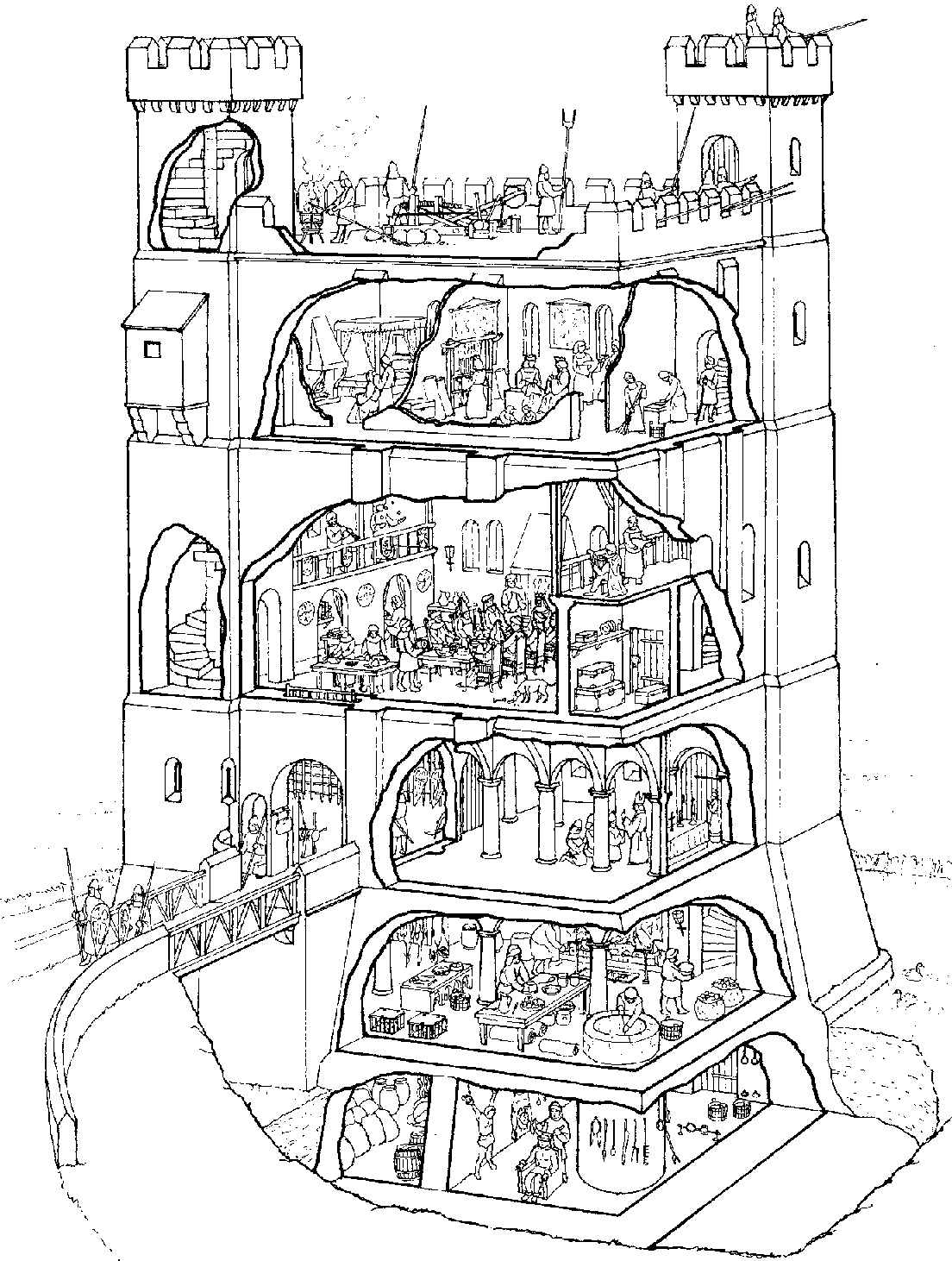
Castles

Introduction
When the Norman barons arrived in England, there were only about 180 of them! By contrast, there were maybe two or three million Saxons ... itching to kill them and get rid of them.
Consequently, one of the first things every baron did when they took over their lands was to build a castle – cheap-and-cheerful at first but, as the centuries went by, of ever-greater sophistication and complexity.
So this topic is not about 'what'. It is about CHANGE. It is about how castles developed through the middle ages.
This webpage will help you understand HOW and WHY castles changed over time.
Study this webpage, then answer the question sheet by clicking on the 'Time to Work' icon at the top of the page.
Links:
The following websites will help you research further:
Medieval Castles:
•
Mr Donn's site • The History Learning Site has information on
castles and their
defensive features, including webpages on
motte and bailey,
stone keep and
concentric castles
•
Build a medieval castle - quite difficult
Life in a Castle:
After 1066, the new Norman barons built 'motte and bailey' castles. They forced the local Saxons to heap up a mound of earth (the motte). Then a wooden tower called a 'keep' was built on top
– when attacked, if necessary, the defenders could retreat there.
Sometimes there was a courtyard called a 'bailey' at the bottom of the mound. It was surrounded by a wall of wooden stakes.
In the bailey were the stables and barns, the bakehouse, the blacksmith's and the day-to-day living quarters.
.
1 A 'Motte and Bailey' castle
A scene from the Bayeux Tapestry showing Dinant Castle in Normandy.
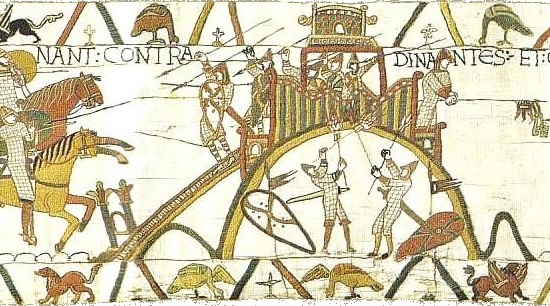
After1100, the barons began to build huge stone keeps. The walls were up to seven metres thick. Notice the steps up to the main entrance, which made it more difficult to break down the door.
The wall at the bottom of the keep angled outwards (called a 'batter') so that stones dropped from the battlements would bounce outwards onto the attackers.
2 A 'Stone Keep' castle
A modern photograph of Scarborough Castle as it is today.
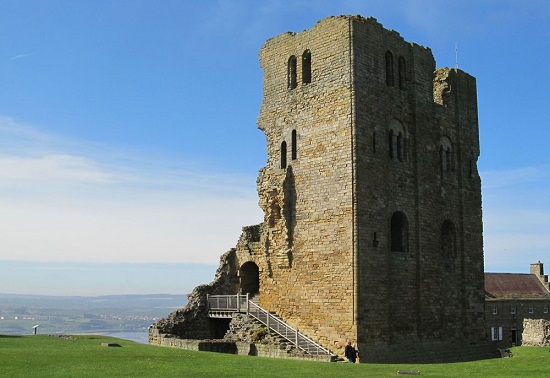
The Crusaders learned a lot about castle design when they were fighting the Muslims in the Holy Land. After 1150, barons began to build strong 'curtain walls' defended by towers, around the keep.
These were an extra layer of defence.
3 'Curtain Walls'
A modern photograph of Warkworth Castle in Northumberland as it is today.
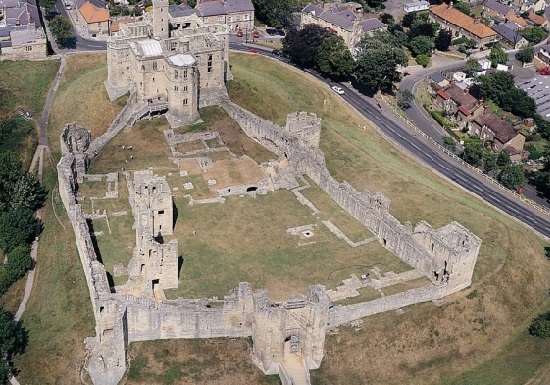
Edward I's castles in Wales were the best of all. They were 'concentric castles', with a central courtyard surrounded by more than one wall. The inner walls were higher than the outer walls, so defenders could fire down on attackers even if the outer wall had fallen.
The gateway was the most heavily-defended, by a building called a 'barbican'.
The towers are round; round towers are better than square ones because any stones fired at them tend to deflect.
4 A 'Concentric' castle
A modern photograph of Beaumaris Castle in Wales as it is today.
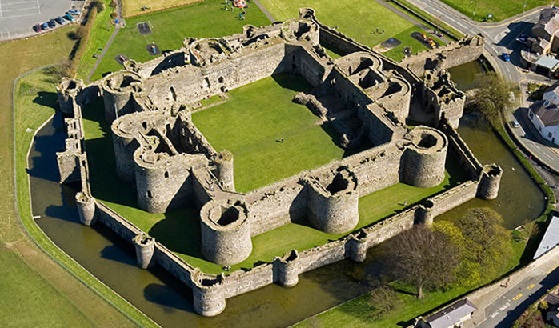
5 Life in a Castle
A modern reconstruction of what went on in a typical Stone Keep Castle.
